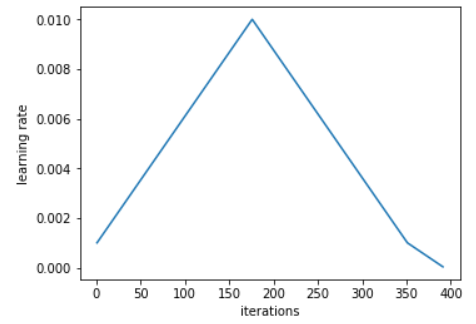本文將詳細(xì)介紹如何使用PyTorch框架來訓(xùn)練自己的數(shù)據(jù)。我們將從數(shù)據(jù)準(zhǔn)備、模型構(gòu)建、訓(xùn)練過程、評估和測試等方面進(jìn)行講解。
- 環(huán)境搭建
首先,我們需要安裝PyTorch。可以通過訪問PyTorch官網(wǎng)(https://pytorch.org/)來獲取安裝指令。安裝完成后,我們還需要安裝一些常用的庫,如NumPy、Pandas、Matplotlib等。
pip install torch numpy pandas matplotlib
- 數(shù)據(jù)準(zhǔn)備
在訓(xùn)練模型之前,我們需要對數(shù)據(jù)進(jìn)行預(yù)處理。這包括數(shù)據(jù)清洗、數(shù)據(jù)增強(qiáng)、數(shù)據(jù)劃分等步驟。
2.1 數(shù)據(jù)清洗
數(shù)據(jù)清洗是去除數(shù)據(jù)集中的噪聲和異常值的過程。我們可以使用Pandas庫來完成這一任務(wù)。
import pandas as pd
# 讀取數(shù)據(jù)
data = pd.read_csv('data.csv')
# 檢查缺失值
print(data.isnull().sum())
# 填充缺失值
data.fillna(method='ffill', inplace=True)
# 刪除異常值
data = data[data['column_name'] < threshold]
2.2 數(shù)據(jù)增強(qiáng)
數(shù)據(jù)增強(qiáng)是通過對原始數(shù)據(jù)進(jìn)行變換來增加數(shù)據(jù)集的多樣性,從而提高模型的泛化能力。常見的數(shù)據(jù)增強(qiáng)方法有旋轉(zhuǎn)、縮放、裁剪等。
from torchvision import transforms
# 定義數(shù)據(jù)增強(qiáng)操作
transform = transforms.Compose([
transforms.RandomRotation(10),
transforms.RandomResizedCrop(224),
transforms.RandomHorizontalFlip(),
transforms.ToTensor(),
transforms.Normalize(mean=[0.485, 0.456, 0.406], std=[0.229, 0.224, 0.225])
])
2.3 數(shù)據(jù)劃分
數(shù)據(jù)劃分是將數(shù)據(jù)集分為訓(xùn)練集、驗證集和測試集的過程。我們可以使用PyTorch的Subset和DataLoader來實現(xiàn)。
from torch.utils.data import Subset, DataLoader
# 劃分?jǐn)?shù)據(jù)集
train_indices = range(0, len(data), 4)
val_indices = range(1, len(data), 4)
test_indices = range(2, len(data), 4)
train_dataset = Subset(data, train_indices)
val_dataset = Subset(data, val_indices)
test_dataset = Subset(data, test_indices)
# 創(chuàng)建數(shù)據(jù)加載器
train_loader = DataLoader(train_dataset, batch_size=32, shuffle=True)
val_loader = DataLoader(val_dataset, batch_size=32, shuffle=False)
test_loader = DataLoader(test_dataset, batch_size=32, shuffle=False)
- 模型構(gòu)建
在PyTorch中,我們可以使用torch.nn模塊來構(gòu)建模型。以下是一個簡單的卷積神經(jīng)網(wǎng)絡(luò)(CNN)的例子。
import torch.nn as nn
class SimpleCNN(nn.Module):
def __init__(self):
super(SimpleCNN, self).__init__()
self.conv1 = nn.Conv2d(3, 32, kernel_size=3, padding=1)
self.conv2 = nn.Conv2d(32, 64, kernel_size=3, padding=1)
self.pool = nn.MaxPool2d(kernel_size=2, stride=2)
self.fc1 = nn.Linear(64 * 56 * 56, 512)
self.fc2 = nn.Linear(512, 10)
def forward(self, x):
x = self.pool(F.relu(self.conv1(x)))
x = self.pool(F.relu(self.conv2(x)))
x = x.view(-1, 64 * 56 * 56)
x = F.relu(self.fc1(x))
x = self.fc2(x)
return x
- 訓(xùn)練過程
在訓(xùn)練過程中,我們需要定義損失函數(shù)、優(yōu)化器,并進(jìn)行迭代訓(xùn)練。
4.1 定義損失函數(shù)和優(yōu)化器
import torch.optim as optim
# 定義損失函數(shù)
criterion = nn.CrossEntropyLoss()
# 定義優(yōu)化器
optimizer = optim.Adam(model.parameters(), lr=0.001)
4.2 訓(xùn)練模型
import torch
# 設(shè)置設(shè)備
device = torch.device('cuda' if torch.cuda.is_available() else 'cpu')
model.to(device)
# 訓(xùn)練模型
for epoch in range(num_epochs):
model.train()
running_loss = 0.0
for images, labels in train_loader:
images, labels = images.to(device), labels.to(device)
# 前向傳播
outputs = model(images)
loss = criterion(outputs, labels)
# 反向傳播和優(yōu)化
optimizer.zero_grad()
loss.backward()
optimizer.step()
running_loss += loss.item()
print(f'Epoch {epoch+1}, Loss: {running_loss/len(train_loader)}')
-
模型
+關(guān)注
關(guān)注
1文章
3178瀏覽量
48730 -
數(shù)據(jù)集
+關(guān)注
關(guān)注
4文章
1205瀏覽量
24649 -
pytorch
+關(guān)注
關(guān)注
2文章
803瀏覽量
13152
發(fā)布評論請先 登錄
相關(guān)推薦
請問電腦端Pytorch訓(xùn)練的模型如何轉(zhuǎn)化為能在ESP32S3平臺運(yùn)行的模型?
Pytorch模型訓(xùn)練實用PDF教程【中文】
怎樣使用PyTorch Hub去加載YOLOv5模型
9個用Pytorch訓(xùn)練快速神經(jīng)網(wǎng)絡(luò)的技巧
pytorch實現(xiàn)斷電繼續(xù)訓(xùn)練時需要注意的要點(diǎn)
YOLOv7訓(xùn)練自己的數(shù)據(jù)集包括哪些

PyTorch教程之15.2近似訓(xùn)練

PyTorch教程15.4之預(yù)訓(xùn)練word2vec

PyTorch教程15.9之預(yù)訓(xùn)練BERT的數(shù)據(jù)集

PyTorch教程15.10之預(yù)訓(xùn)練BERT

基于PyTorch的模型并行分布式訓(xùn)練Megatron解析





 pytorch如何訓(xùn)練自己的數(shù)據(jù)
pytorch如何訓(xùn)練自己的數(shù)據(jù)











評論